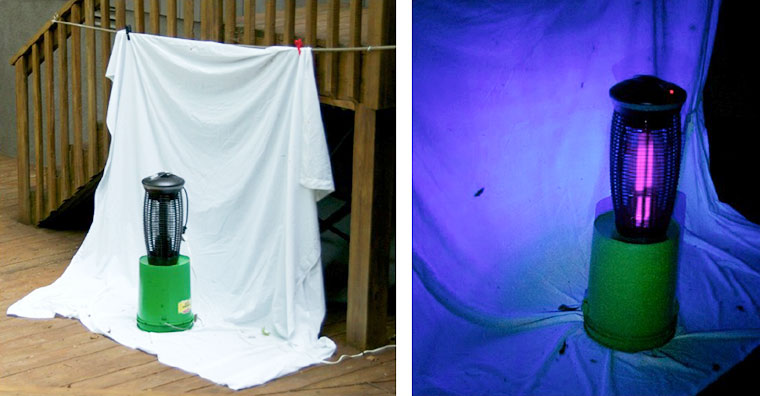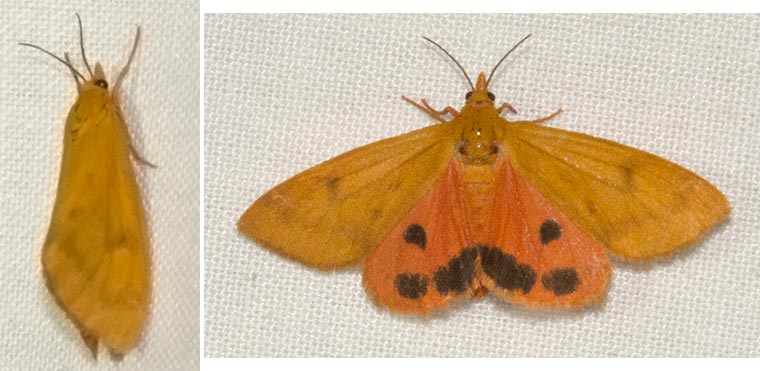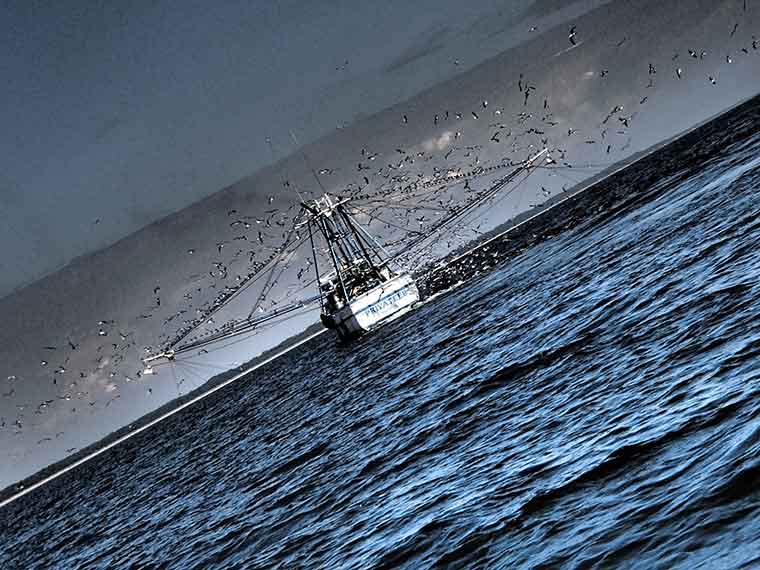It is very gratifying for us to see our grandchildren, Jack and Katie, developing an interest in photography. My wife, Joyce, and I tend to take photographs of living creatures and scenery with the goal of producing a field-guide type result. With a few exceptions, we are hoping to make the subject appear nearly as it appears to our eye. We can then use the photographs to help identify unknown plants, insects, etc. Many of these appear in the various posts on this blog (We put in a few pictures from the internet or from contributions by friends, and these are always given attribution in the post.) Jack and Katie stayed with us for three days last week. We put up our “moth sheet”. This is just a regular bed sheet with a light in front. In this case I am using a “bug-zapper” in which the wires that would kill the insects have been deactivated (Katie snipped them for me originally). The lamp emits UV light, but incandescent lights, or small mercury vapor lights (or combinations of any of them) can be used. A cheap UV black light can be found at mall stores where they primarily sell items for middle school or high school children. They work well also, but don’t leave this type out in the rain, or the bulb will break. Moth sheets will attract many sorts of nocturnal insects, moths. beetles, katydids, mayflies, dobsonflies, and midges to list a few. The insects land on the sheet, and one can go outside to photograph them. By using a flash camera, the blue cast from the UV light is minimized.
Jack took the two photographs of the same moth with one of my cameras. He fully understands shutter speeds, apertures, depth of field and similar topics. This photograph was taken with one of my cameras, using an 18-250 mm lens on a digital single lens reflex camera with flash, and he hand-held the camera, checked focus and did everything else. This is a tiny moth, only about 1 inch long. (The white pattern in the background is the threads in the sheet.). Since the moth was very small there was a lot of sheet showing and not much moth, so I cropped off the excess part of the each picture in a a computer program called Lightroom, but I did not change anything else. In these sort of pictures, getting the proper focus is most important. Just about anything else can be fixed by post processing on a computer, and you can see that Jack focuses very well. This moth would alternately perch for a very short time with its wings over its back (left above). Then it would crawl rapidly moving across the sheet with its forewings extended allowing us to see the brilliant orange and black pattern on top of the hind wings. It left the sheet very quickly, so Jack had a moving target in addition to everything else.
Moth experts call this sudden showing of a contrasting color pattern, often with patterns that might suggest large eyes, a “startle” response. It is believed to be of some use in confusing potential predators. This moth is a kind of “Underwing Moth” in the genus Catccala, but I am not sure which species it might be.
Our granddaughter, Katie, on the other hand, is a different sort of photographer, a more artistic type. She uses an inexpensive “point and shoot” camera, where the camera automatically sets shutter speed and aperture. It produces only JPEG picture files. She never crops or uses any computer program to enhance her pictures. However, she takes terrific pictures. Katie sees colors and patterns that Joyce and I would pass right by, turns the camera at odd angles, and sometimes dials in the special effect filters built into such cameras, such as settings for “sunset”, “pop art”, “sparkle”, “dramatic”, and “reflection”. I don’t know how she picks the most desirable filter; I do know they are not necessasrily intended for the conditions she is photographing. Still she produces some amazing photographs.
Last Fall, we were in a small boat following an actively-trawling shrimp boat just east of Cumberland Island, Georgia. Seabirds, mostly gulls, and Common Bottlenose Dolphins (Turslops truncatus) were also following the shrimp boat anticipating a handout when the net was retrieved and the bycatch thrown overboard. Several of us took lots of pictures. The photograph below is one of Katie’s. The only thing I have done to it is to size it down to 760 pixels, which is the maximum width I can use on this blog. I think it is a great picture, and I am sure that no one else on the boat would think of taking a picture with the camera tilted and some filter or another used.



